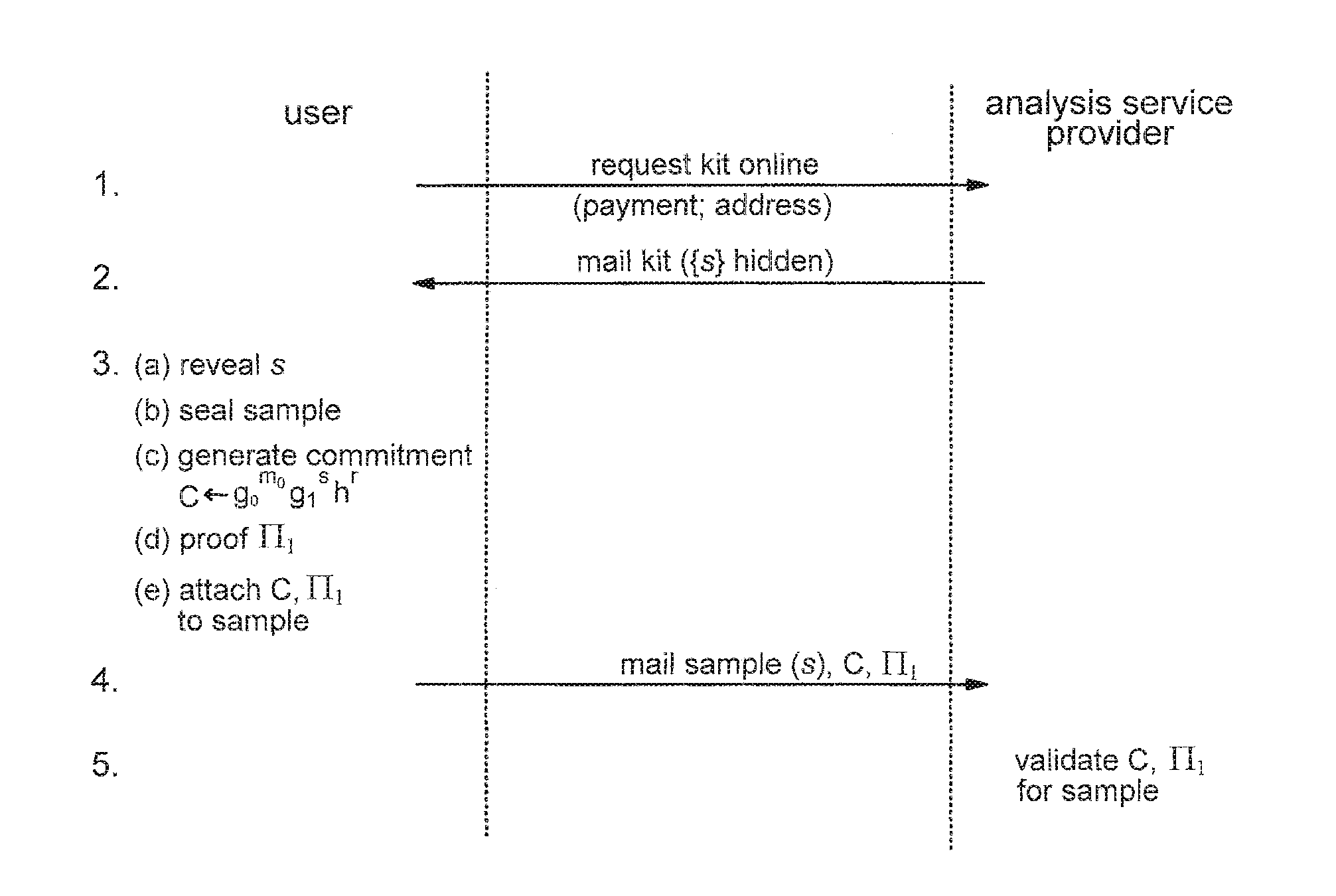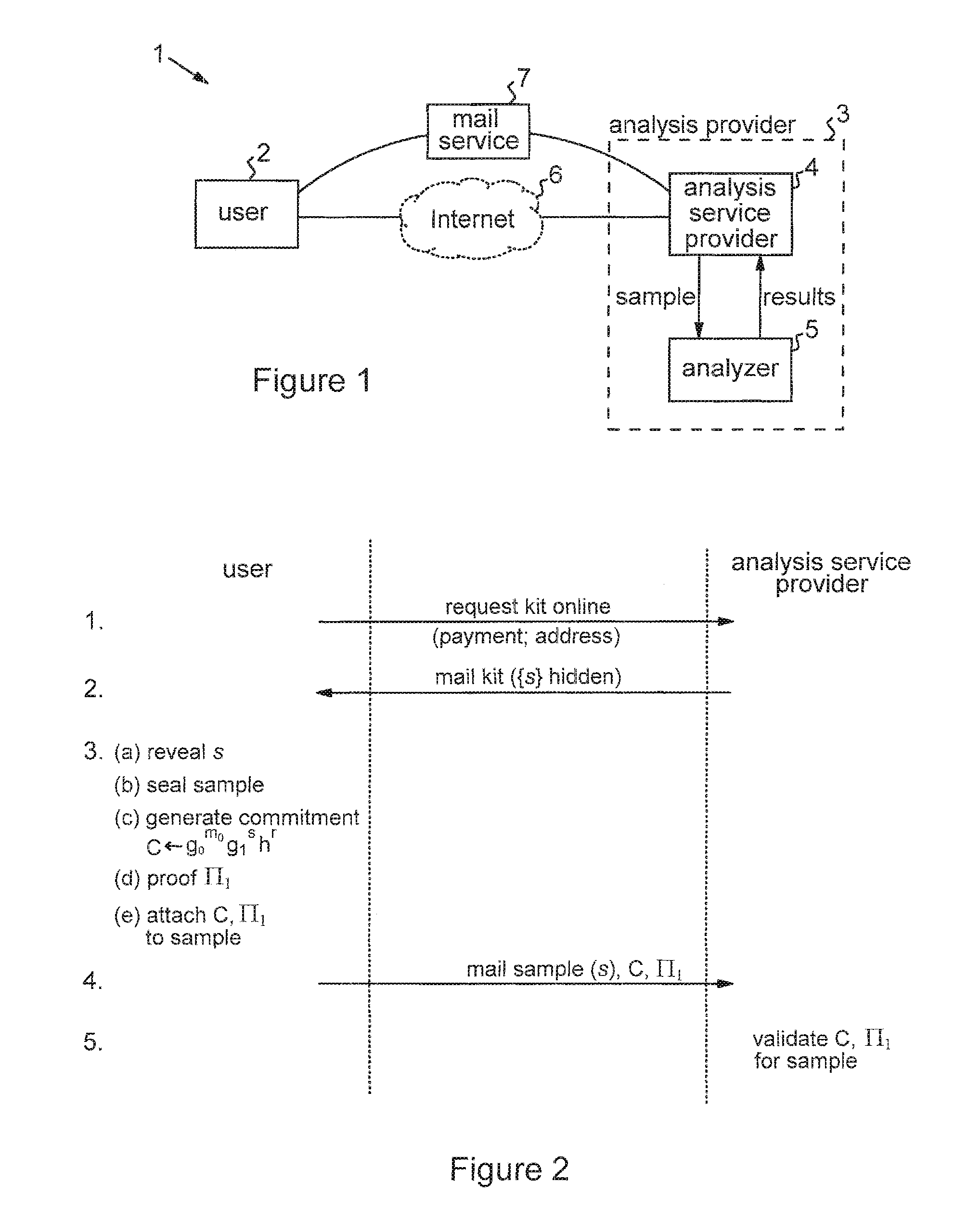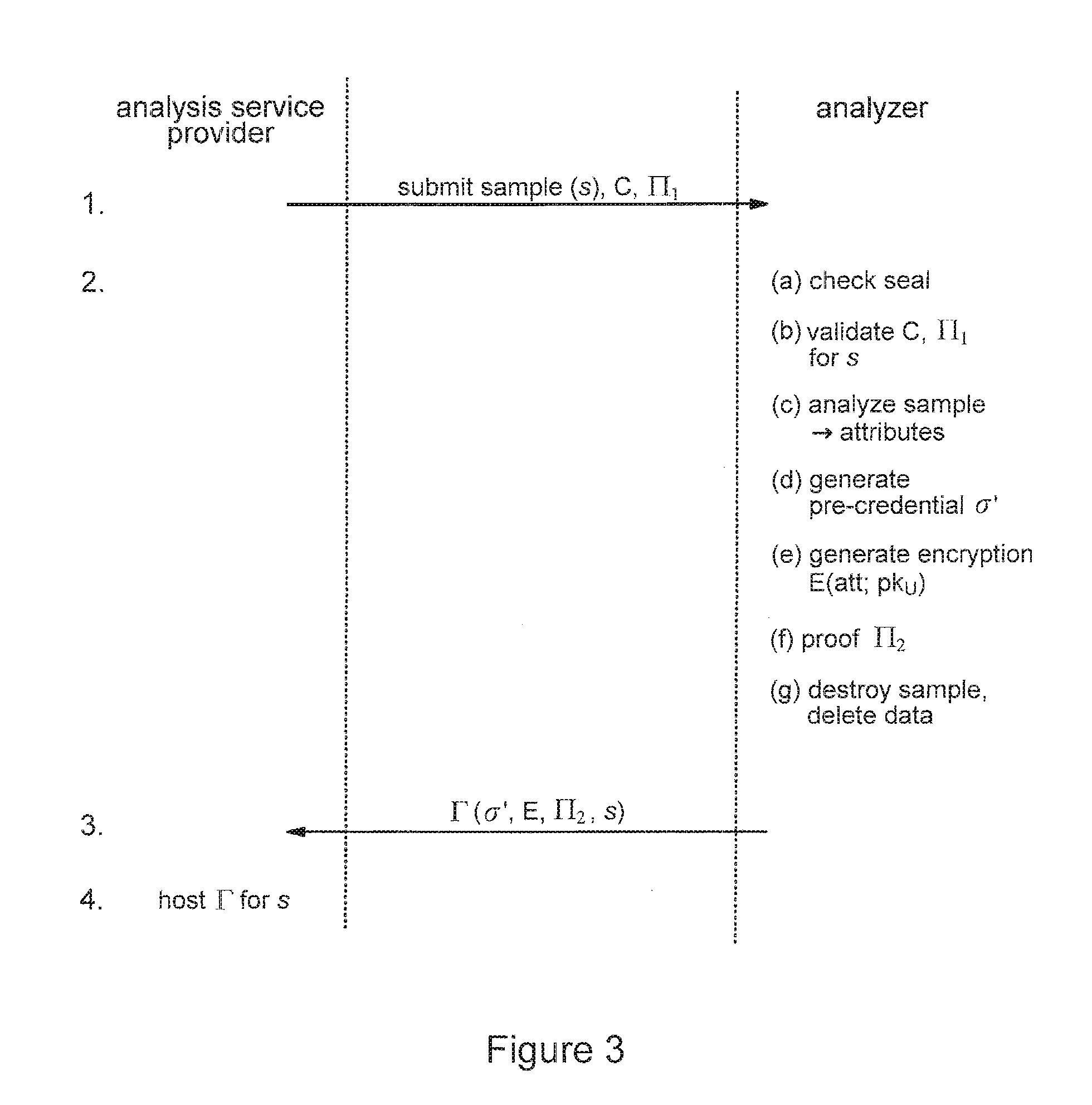Privacy-sensitive sample analysis
a sample analysis and privacy-sensitive technology, applied in the field of privacy-sensitive sample analysis, can solve the problems of serious implications of misuse of such personal information, increased risk of privacy and security violations, and inability to access unauthorized parties
- Summary
- Abstract
- Description
- Claims
- Application Information
AI Technical Summary
Benefits of technology
Problems solved by technology
Method used
Image
Examples
Embodiment Construction
[0056]The process to be described for provision of sample analysis results uses various cryptographic techniques to enforce privacy and security. In particular, the process of this preferred embodiment makes use of an anonymous credential system based on Camenisch-Lysyanskaya signatures. Camenisch-Lysyanskaya signatures are described in detail in: “A Signature Scheme with Efficient Protocols”, J. Camenisch and A. Lysyanskaya, in S. Cimato. C. Galdi and G. Persiano editors, Security in Communications Networks, Third International Conference, SCN 2002, volume 2576 of Lecture Notes in Computer Science, pages 268-289, Springer Verlag, 2003; and “Efficient non-transferable anonymous multi-show credential system with optional anonymity revocation”, J. Camenisch and A. Lysyanskaya, referenced in full earlier. A brief description of the properties of Camenisch-Lysyanskaya signatures is given below to assist understanding of the embodiments to be described.
Assumptions
[0057]Strong RSA Assumpt...
PUM
 Login to View More
Login to View More Abstract
Description
Claims
Application Information
 Login to View More
Login to View More - R&D
- Intellectual Property
- Life Sciences
- Materials
- Tech Scout
- Unparalleled Data Quality
- Higher Quality Content
- 60% Fewer Hallucinations
Browse by: Latest US Patents, China's latest patents, Technical Efficacy Thesaurus, Application Domain, Technology Topic, Popular Technical Reports.
© 2025 PatSnap. All rights reserved.Legal|Privacy policy|Modern Slavery Act Transparency Statement|Sitemap|About US| Contact US: help@patsnap.com



